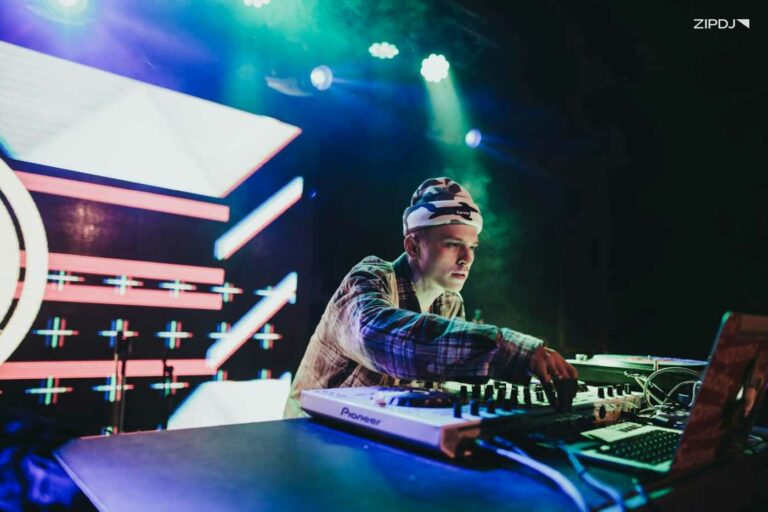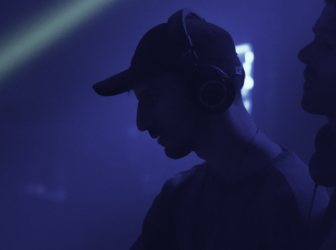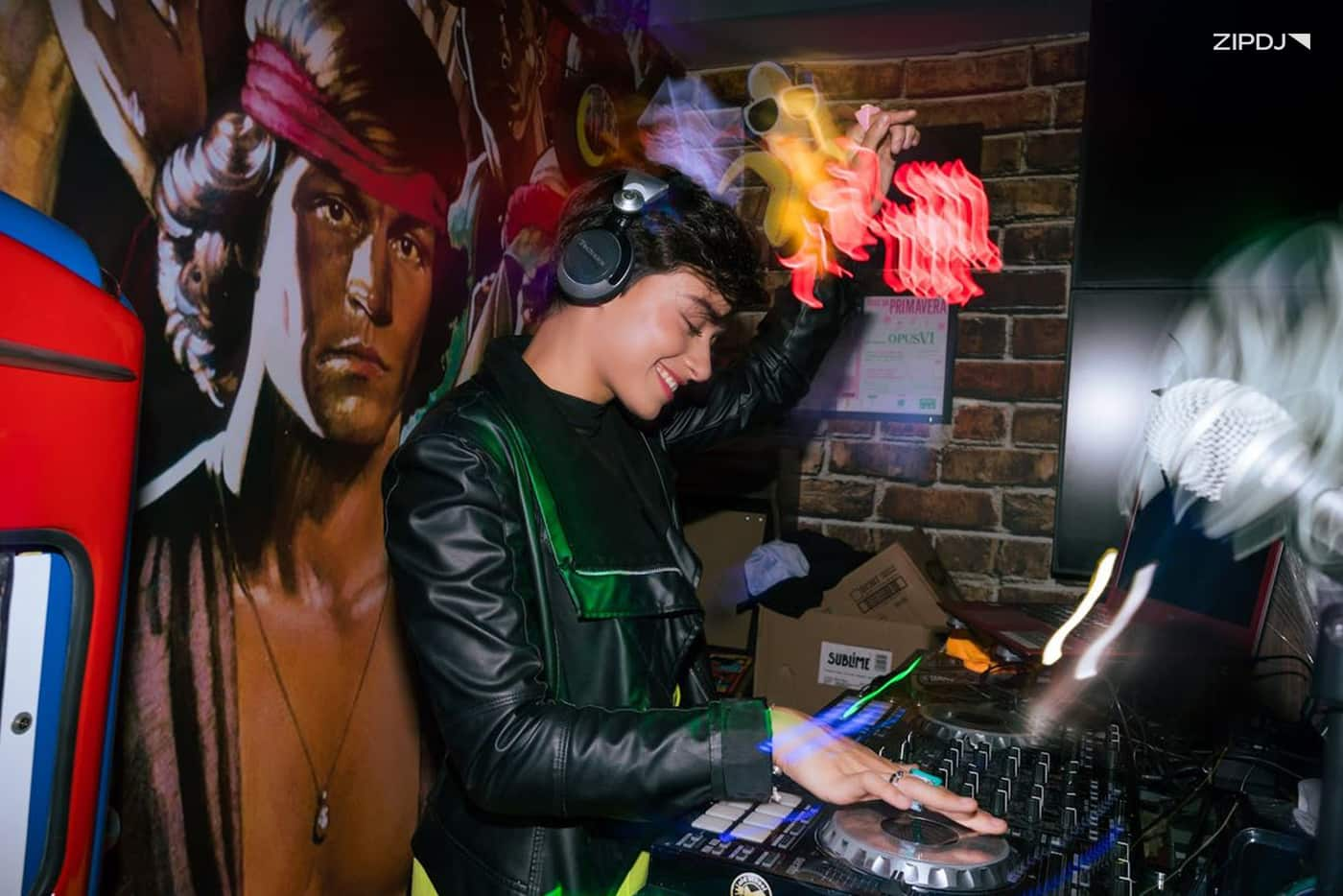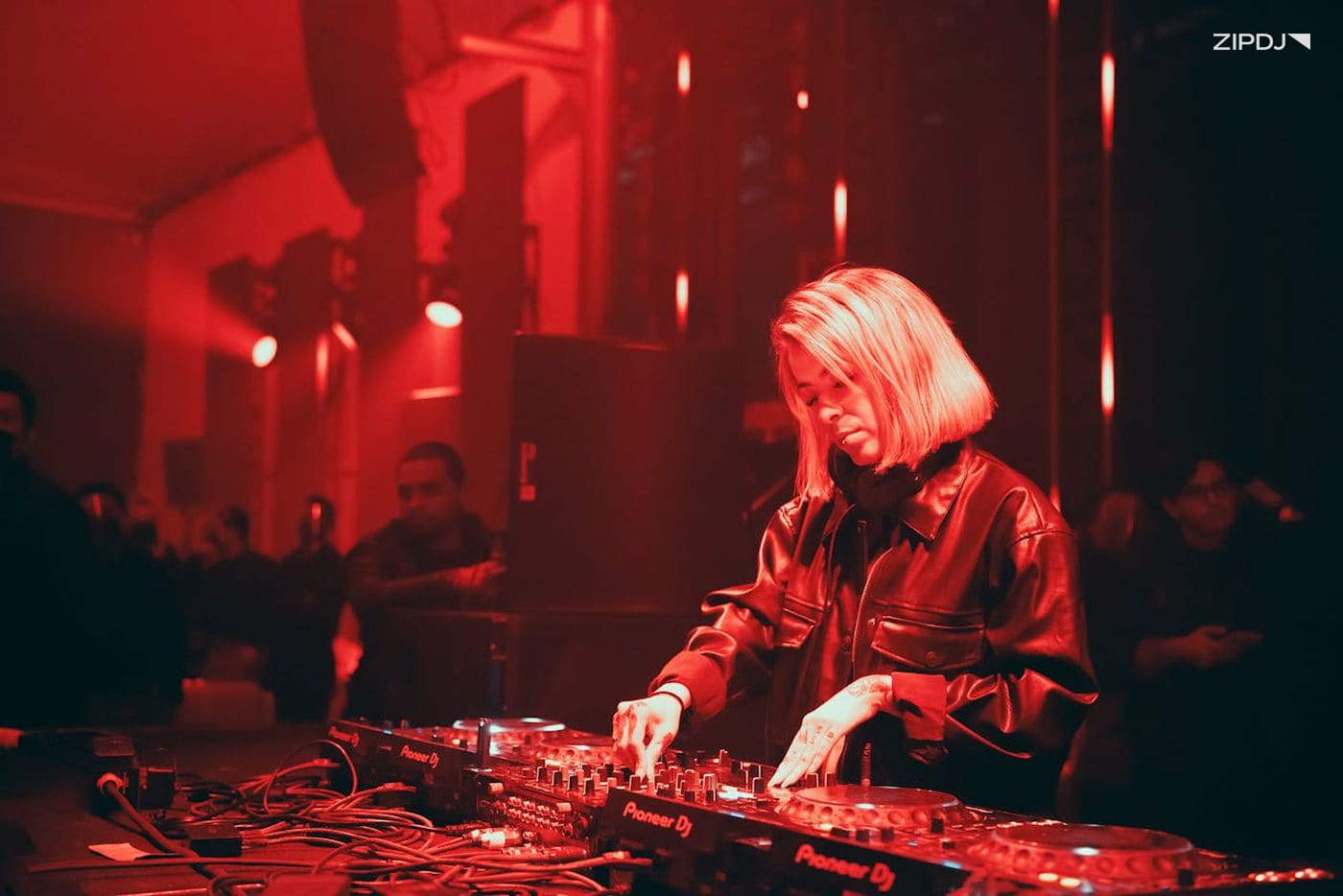The Science of DJing: How To DJ Right In 2025

Mastering the DJ profession requires a keen grasp of everything from music theory and crowd psychology to new technological advancements.
Understanding the science of DJing can help to create a compelling persona and presence complemented by exquisite track selection.
Find out how you can apply a range of scientific concepts to DJing and take full control of the musical elements to dominate the dance floor.

The Science of DJing: How To DJ Right In 2025
Whether you’re a hard-hitting club DJ or a gigging professional at weddings and corporate events, the science of DJing remains equally applicable.
This guide covers all aspects of the topic, from the role of AI in technology to the use of psychological and musical theories to help organize your sets.
So, with that said, here’s how you can apply the science of DJing to deliver outstanding sets in 2025:
Step 1. Select Your DJing Technology
Over the past few decades, the art of DJing has been intimately linked to a range of technological advances that have impacted how DJs work.
Today, three main types of DJ technology are available, from traditional turntables to digital DJ controllers and virtual DJing software.
Here’s an overview of each category and how they can be used independently or as part of a hybrid DJ setup to create unique mixes.
Traditional DJing
Traditional DJing uses direct-drive turntables, such as the iconic Technics 1210s, in combination with a mixer to create seamless sets between records.
While most DJs use contemporary DJ controllers, turntable mixing is still highly popular for its tactile approach to mixing and archive of vinyl releases.
Hip-hop DJs, in particular, opt for turntables when scratch DJing because they deliver a more robust and tactile experience than digital hardware alternatives.
Digital DJing
The most common form of technology used today is digital DJing, mixing music from digital audio files through a DJ controller loaded with features and EQing.
Digital DJing eliminates the limitations of physical record collections and adds a raft of tools that traditional mixers often lack.
It also allows for more complex and unique sets through technological innovations such as stem separation for use in mixes.
Virtual DJing
Virtual mixing takes the concept of DJing into the virtual sphere, with DJs performing their sets through VR headsets such as Oculus Rift.
While the format is in its infancy, a growing community of VR DJs is exploring the potential of platforms such as Vinyl Reality and Tribe XR DJ Academy.
Popular Pioneer DJ controllers are available for emulation in VR DJing, and the potential for creating visually stunning environments is expanding.
Step 2. Pick Your Software
Just as there is an extensive selection of DJ controllers, turntables, and other hardware available for DJs, there is also a broad range of software.
Choosing the best software for your mixes may depend on your chosen DJ controller, with each manufacturer compatible with specific programs.
Your choice of software will also have an impact on the potential mixing techniques you can draw from when performing a DJ set.
While all setups include basic features such as tempo matching and an EQ for blending transitions, some will offer additional tools to expand your options.
You’ll need the right software if you want to use stems to create creative options for transitions and loops or combine them with effects.
Likewise, if you’re introducing live elements to your sets, such as the use of samples or integrating synths, your setup needs the right tools for the job.
Step 3. Research DJ Culture
While DJ culture and science might seem unrelated on the surface, plenty of evidence indicates that culture significantly influences science.
DJing trends, from musical genres to performance techniques, are a key element of research upon which the technology is improved.
Staying on top of these trends is a good way to ensure your DJing remains at the forefront of the industry and a fresh audience experience.
You can follow the best DJ blogs to gain insights from industry professionals and keep on top of the latest electronic music releases.
Watching DJ sets from your influences will also help you stay abreast of DJ culture and the techniques used by professionals.
Doing so gives you an arsenal of tried-and-tested tracks and performance strategies for pumping the dance floor.
Step 4. Create A DJ Persona
The marketing industry is worth billions of dollars, so it’s no surprise that extensive scientific research has been done in this field of expertise.
A wealth of studies supports everything from the psychology of shopping to the use of color theory in creating brand-related visuals.
These studies are just as applicable to crafting a DJ persona and brand as they are to countless other popular products and services.
Whether you’re striving to become a famous DJ or working at private events, a DJ persona captures the essence of your musical genres and personality.
Potential fans should be able to read your style at a glance, with your brand reflected in everything from your clothing to the fonts and mascot designs.
Understanding the psychological principle of persuasion can help you focus on the best words for your name and personal slogans.
Your brand should instantly reflect your skills and style, and researching and applying the science of branding will help you succeed in this objective.
Step 5. Understand Crowd Psychology
Just as several psychological concepts apply to the individual, so are there relevant theories for group psychology important to DJing.
The nightclub offers a unique opportunity to create intimate experiences between strangers through the appreciation of music and dancing.
One psychological theory that is deeply related to this dynamic is the arousal theory, which can be adopted to enhance the audience’s excitement levels.
Understanding this theory and how it can be used to create emotional journeys for the crowd can significantly improve a DJ’s track selections.
Combined with a good grasp of body language to read the crowd’s energy levels, it can allow for effective ebbs and flows throughout a set.
This can enhance the social bonding of the experience and use music as a positive tool for creating unity and transcendence with the crowd.

Step 6. Analyze Your Playlists
The days of simply organizing vinyl records and CDs are behind us, with digital storage vastly increasing most DJ’s music collections.
New technology has opened up a greater degree of categorization when organizing playlists and analyzing tracks on various data points.
In addition to traditional categorizations such as artist, genre, and record label, new tools can pinpoint BPM, key, and various other things.
With the rise of artificial intelligence, playlists can now be generated based on DJ preferences and tapping into the latest music trends.
Adopting this technology is essential for DJs to stay ahead of the curve, access unreleased music, and find the right edits for their sets.
It can also be used to create extensive subcategories for a wide range of DJing styles, helping gigging DJs meet their audience’s demands.
With the addition of samples, stems, and other edits, playlist management will continue to evolve to meet DJs’ growing demands.
Step 7. Balance Technology & Audience Interactions
With technology’s rise and its increasingly dominant place in all aspects of life, it’s vital for DJs to establish clear boundaries in their performances.
In order to be a successful DJ, the time spent on the mixing activity and audience interactions should be harmonious.
On the one hand, data science for DJing can help establish energy levels in the audience by analyzing the tempo and key of a song.
Tempo is important for maintaining the flow of a DJ set, and many DJs opt for around 128 BPM due to its known relationship to the heartbeat.
That said, DJs who focus exclusively on their hardware will miss out on the benefits of engaging with the crowd and fostering a sense of synergy.
The degree to which this matters will vary depending on the style of DJing and the audience’s expectations of participation.
DJs at weddings and birthday parties provide high levels of engagement, while underground techno DJs often perform shrouded in smoke.
Whatever your personal style, understanding how to manage your interaction with technology and audience interaction is key to perfecting DJ etiquette.
Step 8. Learn Basic Music Theory
DJing is all about playing great music in a way that fully resonates with the audience and showcases your taste and flair for mixing.
Just as a grasp of the psychology of music can help pump up the audience, music theory can further enhance your playing style.
Most DJs are aware of how tempo can be managed during a set to build tension, increase energy, and prepare for a stunning drop.
Fewer, however, are familiar with music theory concepts around chords, melodies, and scales that can be applied to electronic music DJ sets.
Understanding the practical applications of these theories can make the difference between an average DJ set and one that gives people chills.
It can be used to order songs via complementary keys and use major or minor keys to alter mood through cheerful or downbeat music.
These rules can be applied to the choice of chord progressions and melodies that can result in a rich, emotionally vibrant experience for the audience.
They can also be a great introduction to the fundamentals of DJ production, whether creating mashups, remixes, or composing original music.
In short, the greater your grasp of music theory and composition, the more intuitively you’ll organize your playlists and deliver complex mixes.
Step 9. Master The Drop
The term “the drop” has been used in DJing history for many years, since the days of Grandmaster Flash and the formation of hip-hop.
It refers to the moment the needle arm of a record player first hits the vinyl on a turntable, and it has been used since in the EDM music scene.
The structure of the drop is relatively straightforward, beginning with the build-up and conclusion of rhythm, which is followed by a breakdown.
Breakdowns combine several musical elements, building up drums, chords, and other elements until everything else hits the soundscape.
This drop represents the release following the tension of the build-up. It’s typically the point at which the crowd goes wild and full energy levels return.
Indeed, brain imaging technology has given us valuable insights into the processes at work during the drop and why it’s an indispensable DJ technique.
The anticipation from the moment before the drop, with its crescendos of drums and other heightening elements, paves the way for a dopamine rush.
Just as the best musicians and composers appreciate the significance of the drop in their work, so too do the best DJs consistently use it.
It’s a technique open to endless experimentation, from using effects such as delays to discovering the perfect progressions to heighten tension.
Step 10. Manage Your Health
The importance of managing good mental and physical health comes with unique challenges from the perspective of DJing.
Professional DJs typically work unusual hours and often have to deal with additional strains such as jet lag, poor sleeping patterns, and other bad habits.
Fortunately, there’s a wealth of data concerning how to manage DJ’s mental health and compensate for the lifestyle and environment of the profession.
One way to improve mental and physical health is to manage energy levels through optimal sleep patterns and a consistently healthy diet.
This can also include intermittent fasting, something that many DJs incorporate into their routines to help with energy and metabolic activity.
Likewise, finding the time to exercise can help to counteract the negative impact of alcohol and the late-night lifestyle associated with DJing.
While integrating good habits into a routine takes discipline, the rewards for mental and physical health make the effort worthwhile.
Summary
Science is a continually evolving process that is rapidly reshaping how DJs manage their music collections, perform sets, and engage with the audience.
By applying the scientific principles of DJing outlined in this article, you can master the art of mixing and creating engaging experiences for fans.
Not a member ?
Join Today for Unlimited Music Downloads. Visit zipdj.com for more information.



